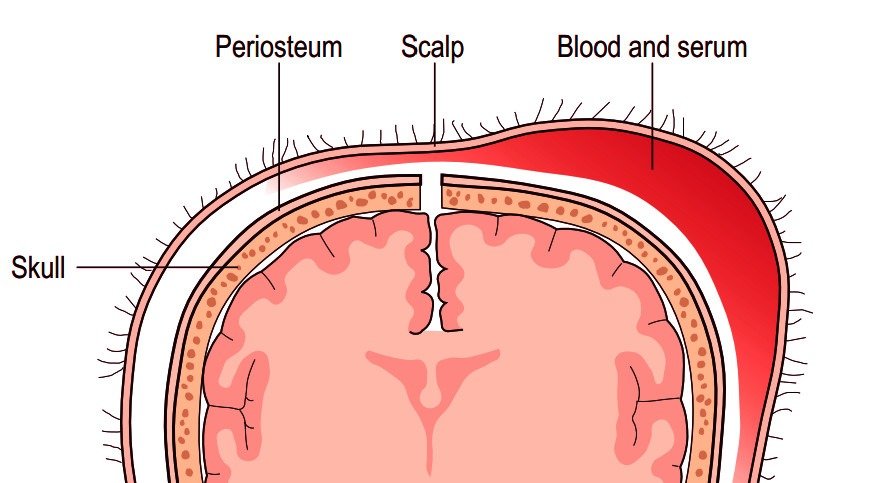Introduction:
The birth of a child is a momentous occasion, filled with joy and anticipation. However, childbirth is a complex process that can occasionally lead to certain conditions affecting the newborn. One such condition is the ecchymotic caput succedaneum, a term that might sound unfamiliar to many. In this article, we will explore what ecchymotic caput succedaneum is, its causes, symptoms, and how it can be managed.
Understanding Ecchymotic Caput Succedaneum: Ecchymotic caput succedaneum is a medical term used to describe a condition in newborns characterized by the accumulation of fluid and blood between the infant’s scalp and the skull bones. This condition typically occurs during labor and delivery, specifically as a result of the baby’s head passing through the birth canal. It is a benign condition and is not considered a serious health concern in most cases.
Causes: The primary cause of ecchymotic caput succedaneum is the pressure and trauma exerted on the baby’s head during the birthing process. The pressure can cause the blood vessels in the scalp to break, leading to the accumulation of blood and fluid. This is particularly common in babies born vaginally, especially when the delivery process is prolonged or involves the use of vacuum extraction or forceps.
Symptoms: Ecchymotic caput succedaneum presents with several noticeable symptoms, including:
- Swelling: The affected area of the baby’s scalp will appear swollen and may feel soft or spongy to the touch.
- Discoloration: The area may also be discolored, ranging from a reddish hue to a bluish tint due to the accumulation of blood.
- Fluid Accumulation: The accumulation of fluid between the scalp and skull may cause the skin to appear puffy or fluctuant.
- No Long-term Effects: While the appearance may be alarming, it’s important to note that ecchymotic caput succedaneum usually resolves on its own within a few days to a week after birth. It doesn’t typically cause any lasting damage or health issues.
Management: In most cases, ecchymotic caput succedaneum requires minimal intervention, as it tends to resolve naturally as the baby’s body reabsorbs the accumulated fluid and blood. However, there are a few things to keep in mind:
- Monitoring: Healthcare providers will monitor the baby’s condition to ensure that the swelling and discoloration are improving and that no complications arise.
- Comfort Measures: To help ease any discomfort, gentle care should be taken while handling the baby’s head. Using soft pillows or padding during sleep can provide extra comfort.
- Proper Nursing Care: Keeping the affected area clean and dry can help prevent any infections from developing.
- Medical Consultation: If the swelling doesn’t subside or if there are concerns about infection or other complications, it’s important to consult a pediatrician for further guidance.
Conclusion: Ecchymotic caput succedaneum might sound like a complex medical term, but it’s essentially a transient condition that can occur as a result of the birthing process. While the swelling and discoloration might cause concern for parents, it’s reassuring to know that this condition usually resolves on its own without causing any long-term harm to the newborn. As always, if there are any concerns about the baby’s health, it’s best to consult a healthcare professional for proper guidance and reassurance.

